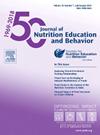Long-Term Participation in the New Jersey Healthy Corner Store Initiative and Availability of Healthful Foods in Urban Corner Stores
IF 2.3
3区 医学
Q2 EDUCATION, SCIENTIFIC DISCIPLINES
引用次数: 0
Abstract
Background
Urban residents visit corner stores for grocery staples and grab-and-go food items, highlighting their significant role in urban food access. The New Jersey Healthy Corner Store Initiative (NJHCSI) aims to improve the healthfulness of corner stores, particularly those frequented by residents living in food deserts. Long-term participation in programs such as NJHCSI may lead to more nutritious offerings, but this area remains understudied.
Objective
The objective of this study is to examine differences in the availability of staple and grab-and-go food offerings between long-term and newly recruited stores in the NJHCSI.
Study Design, Settings, Participants
Convenience stores (n=25) in the greater NJ area were evaluated in summer 2024. The tool assessed the healthfulness of the food environments of corner stores via the SLAQ tool (availability staple foods; 13-point scale) and the NEMS-GG (grab-and-go options; 70-point scale). Data collection was conducted by trained research assistants.
Measurable Outcome/Analysis
Independent sample t-tests examined differences in the availability of staple and grab-and-go food offerings between long-term stores (n=15) and newly recruited stores (n=10).
Results
Long-term participants of NJHCSI, on average, demonstrated a higher availability of healthy staple foods (x=7.3) compared to recently participating stores (x=5.3; t=1.9, p=0.04), specifically offering more fruits and vegetables. Long-term participants also demonstrated more healthful grab-and-go scores (x=10.53) compared to newly recruited stores (x=7.30; t=2.1, p=0.02).
Conclusions
Long-term participation may be linked with availability of healthful staple and grab-and-go foods in urban corner stores. Future research should explore the factors contributing to this difference.
Funding
None
长期参与新泽西州健康街角商店倡议和健康食品在城市街角商店的供应
城市居民到街角的商店购买杂货和打包食品,凸显了他们在城市食品获取中的重要作用。新泽西健康街角商店倡议(NJHCSI)旨在改善街角商店的健康状况,特别是那些生活在食物沙漠地区的居民经常光顾的商店。长期参与NJHCSI等项目可能会带来更多的营养产品,但这一领域仍未得到充分研究。本研究的目的是研究NJHCSI中长期和新招募的商店在主食和即食食品供应方面的差异。研究设计、环境、参与者于2024年夏季对大新泽西地区的便利店(n=25)进行评估。该工具通过SLAQ工具(主食可得性;13分制)和NEMS-GG(抓走选项;70分制)。数据收集由训练有素的研究助理进行。可测量的结果/分析独立样本t检验检验了长期商店(n=15)和新招募商店(n=10)在主食和即食食品供应方面的差异。结果NJHCSI的长期参与者平均表现出健康主食的可得性(x=7.3)高于最近参与的商店(x=5.3;T =1.9, p=0.04),特别是提供更多的水果和蔬菜。长期参与者也表现出更健康的“抓着走”得分(x=10.53),而新招募的商店(x=7.30;t = 2.1, p = 0.02)。结论长期参与可能与城市街角商店中健康主食和即食食品的可获得性有关。未来的研究应该探索造成这种差异的因素。FundingNone
本文章由计算机程序翻译,如有差异,请以英文原文为准。
求助全文
约1分钟内获得全文
求助全文
来源期刊
CiteScore
4.20
自引率
11.50%
发文量
379
审稿时长
44 days
期刊介绍:
The Journal of Nutrition Education and Behavior (JNEB), the official journal of the Society for Nutrition Education and Behavior, is a refereed, scientific periodical that serves as a global resource for all professionals with an interest in nutrition education; nutrition and physical activity behavior theories and intervention outcomes; complementary and alternative medicine related to nutrition behaviors; food environment; food, nutrition, and physical activity communication strategies including technology; nutrition-related economics; food safety education; and scholarship of learning related to these areas.
The purpose of JNEB is to document and disseminate original research and emerging issues and practices relevant to these areas worldwide. The Journal of Nutrition Education and Behavior welcomes evidence-based manuscripts that provide new insights and useful findings related to nutrition education research, practice and policy. The content areas of JNEB reflect the diverse interests in nutrition and physical activity related to public health, nutritional sciences, education, behavioral economics, family and consumer sciences, and eHealth, including the interests of community-based nutrition-practitioners. As the Society''s official journal, JNEB also includes policy statements, issue perspectives, position papers, and member communications.

 求助内容:
求助内容: 应助结果提醒方式:
应助结果提醒方式:


